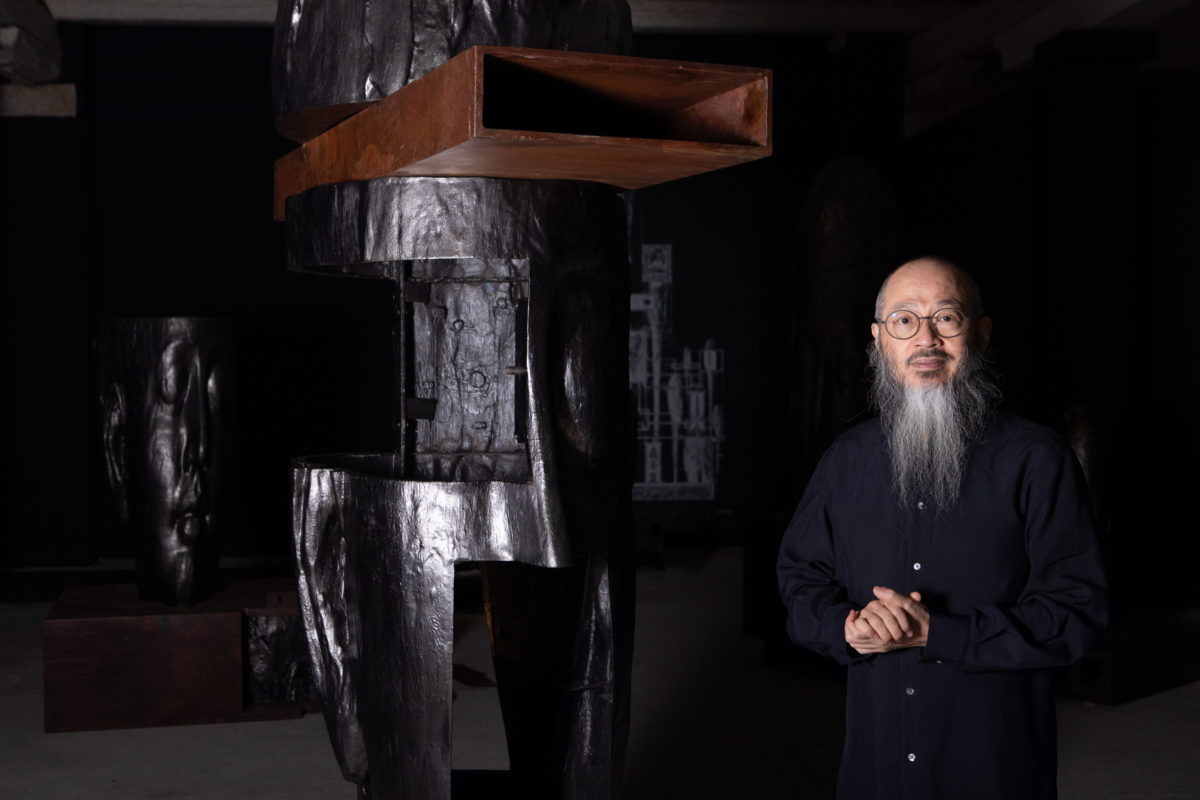Although Wallace Chan came to prominence as a maker of jewellery early this century, he began as a sculptor and carver in Hong Kong in the 1970s. And it is sculpture with which he has come to the cultural fiesta which is the Venice Biennale, taking place for the first time in three years after a pandemic-enforced hiatus.
His deconstructed titanium sculpture Totem is presented at the Fondaco Marcello on the banks of the Grand Canal. It is a disassembled version of the 10-metre figure A Dialogue Between Materials and Time, Titans XIV, and is laid out as an installation in a darkened space of the 15th century warehouse. Where once were stored tobacco and textiles, now the components of the sculpture create a maze around which viewers are invited to wander.

Chan’s intention in presenting Totem is to focus attention on the relationship between the various parts of the sculpture rather than relying on its previous unified form. This disunity, he says, suggests “the fragility and imminent collapse of a previous order”. This is hardly a subtle or original message for a festival assembling still in the shadow of covid-19, but it is blameless enough. One can learn more, however, by looking beyond first impressions.
The exhibition space is dark and slightly cramped in feeling, the parts of the sculpture looming at the viewer almost without warning. A gentle but haunting soundtrack infuses the experience with a peculiar calm, quite at odds with what should be the disorientation of the dim warehouse and the scattered objects – some huge, beyond human scale. There is a prescribed route through the various parts, but Chan insists that he wants the viewer to experience the installation as an individual, rather than to be instructed in its meaning and import.
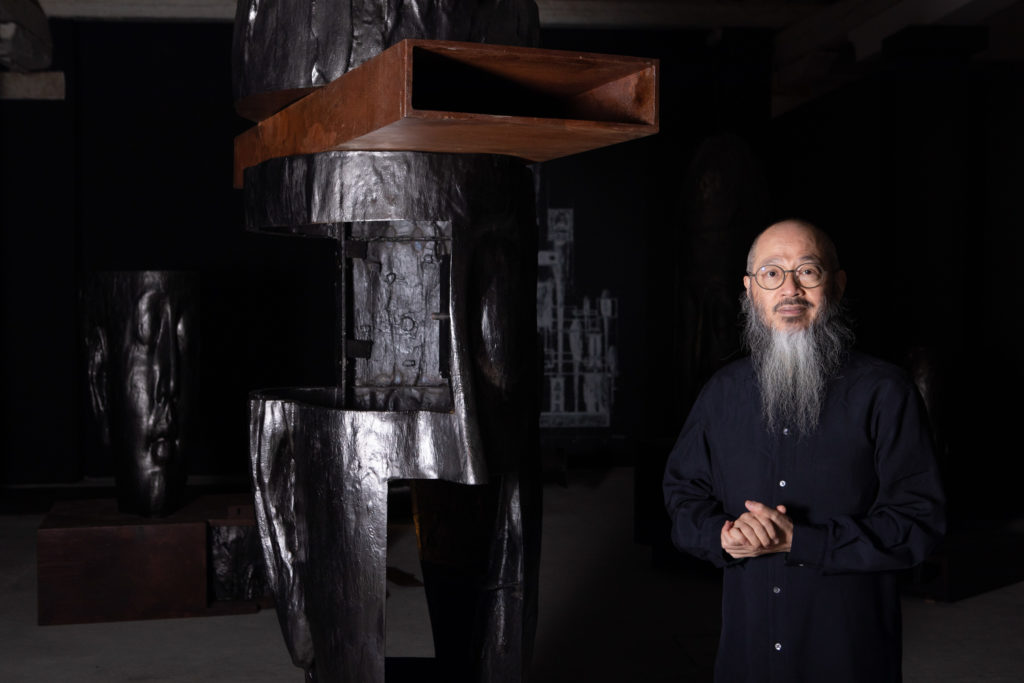
Through his press release for the exhibition, Chan explains:
This exhibition is influenced by my personal journey of contemplation and curiosity about life, nature and the mysteries of the universe. I am interested in exploring the mystery of matter and form and understanding the distinctions between the imagined illusory space and real physical matter.
Mind over matter
I wanted to know more, I wanted to find out what Chan thought of the installation and how he related it to the world outside the Fondaco, beyond the canal. I asked first if he thought it was possible for any Chinese artist to make art which was not overtly or implicitly political, given the current geopolitical situation and what Professor Niall Ferguson has called “Cold War II” between the US and China. The People’s Republic is, after all, notoriously intolerant of even mildly independent thought, and everyone can call to mind the controversies surrounding Ai Weiwei, the artist and documentary maker imprisoned by the Chinese authorities.
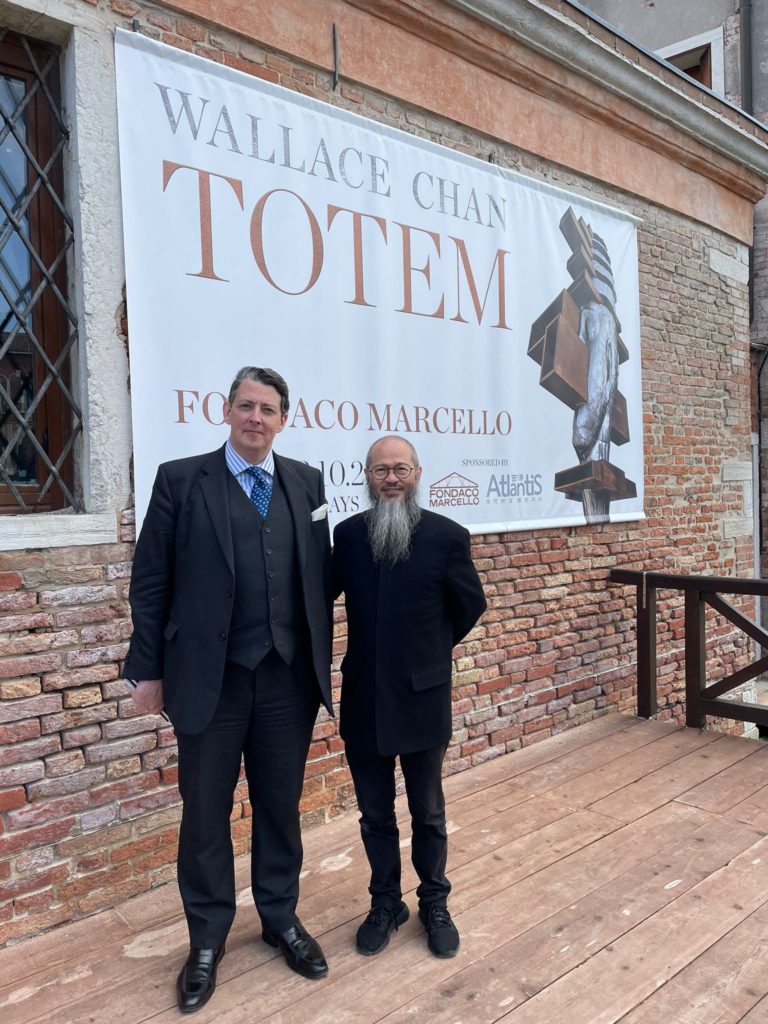
Chan, a polite and reserved man, explained through an interpreter than he did not involve himself in politics, which he viewed as an essentially fleeting phenomenon. Opening then narrowing his hands, he continued that he viewed time as a continuum, and his own place in it, or that of others, as small and insignificant. This reflects his time as a monk in the early 2000s, when, shaken by the death of his mentor, he renounced all his possessions, burned his photographs and went on a retreat.
I suspect Chan is being deliberately discreet, if not evasive. The curator of the exhibition, James Putnam, says “The calm, enigmatic face depicted in Chan’s sculpture is a mystical spirit, a form of totem that expressed the transcendental state of absolute oneness.”
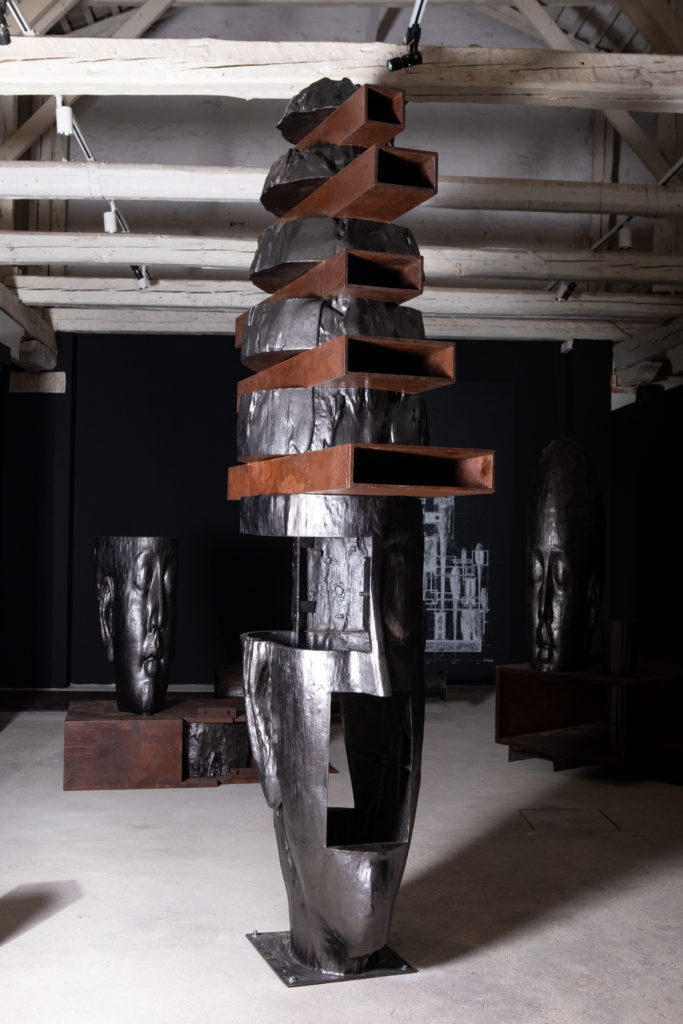
In fact I think there is something quietly revolutionary about Chan’s work. On one level, his diminution of the individual and his emphasis on communal bonds, on interdependence and unity, is a sentiment with which a Communist régime like China’s can be relaxed. It is not so hard to see the party as a community, the people as interdependent and united (though governed strictly from above), and individual expression submerged into a larger whole.
But toying with the concept of the individual is like picking at a fraying rope. It can easily untangle. For me, the silent contemplation of Totem, the way in which the viewer is thrown back on his or her own resources to decipher the meaning of the installation, speaks more powerfully of the individual than any bland press-release language of unity and collectivity. Chan speaks of “encouraging new perspectives” on his work through its deconstruction, and this, surely, for a Chinese artist is more than an empty expression.
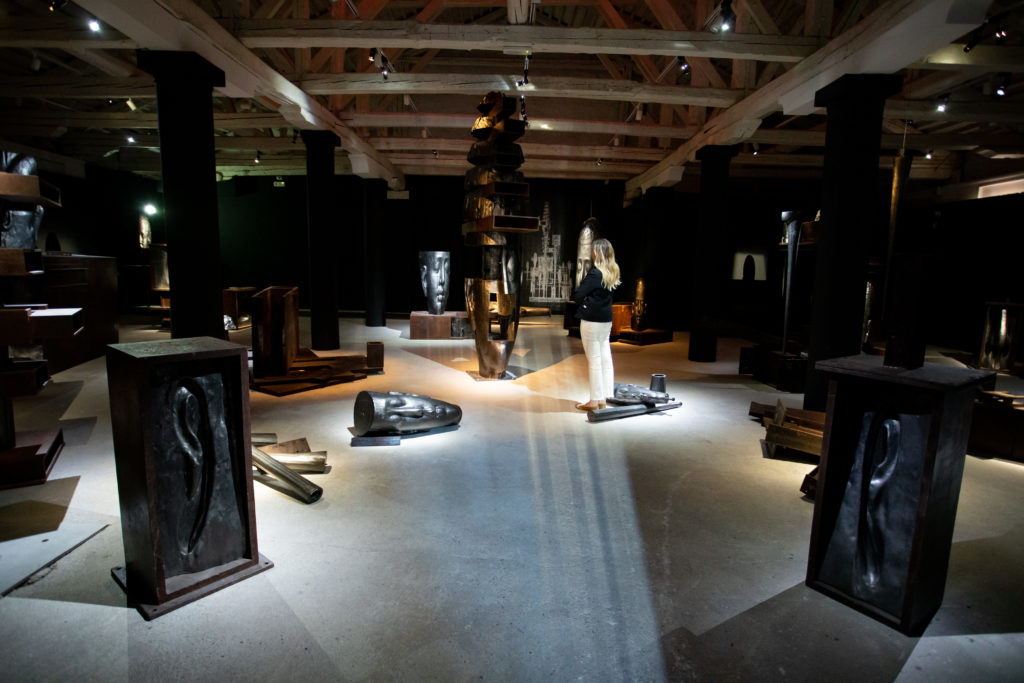
The benign mysticism of Chan’s installation is soothing and unthreatening. Walking around the installation is a journey of discovery, of interpretation, of essentially independent judgement of a complicated sculpture. Chan’s message, for me, is that the viewer can make of Totem what he or she will: the opinion of one person is not, in the long years of time of which Chan speaks so gently, of much importance. And yet, simultaneously, it is the only thing which matters.
Art is important only insofar as it is understood by those who see it. As a tree falling in the forest is silent if it is unheard, so a piece of art exudes no meaning if it is unseen. Following this argument to its logical conclusion, an artefact, an object, an exhibit assumes importance and meaning only when it is understood. make of that what you will: but for this reviewer, it is a profound statement on the centrality of the individual human experience.
Totem is on display at Fondaco Marcello until 23 October 2022.

